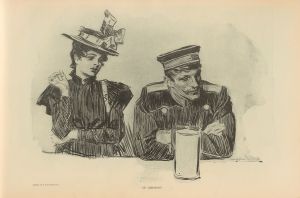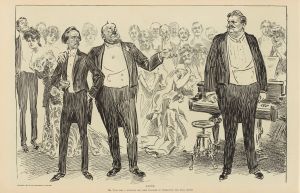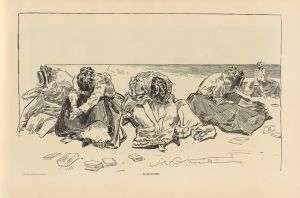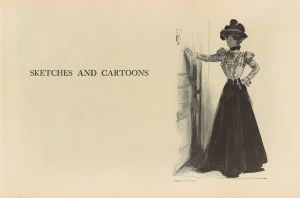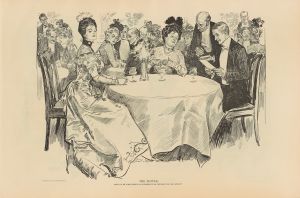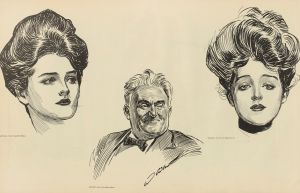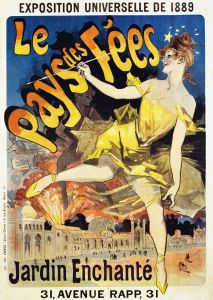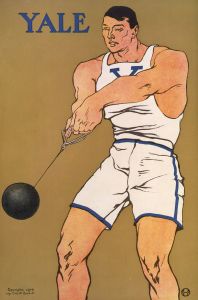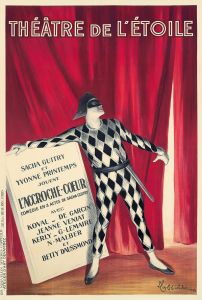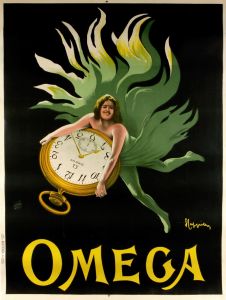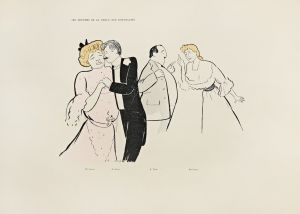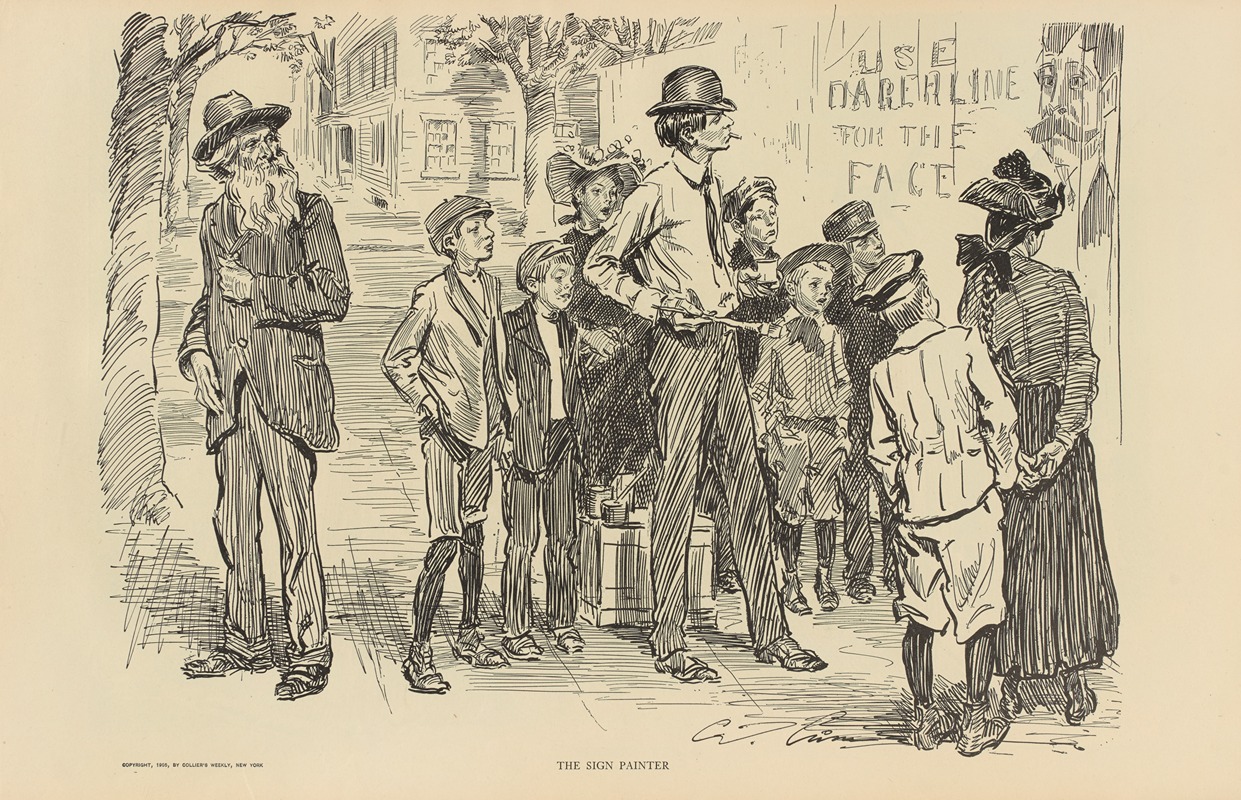
The sign painter
A hand-painted replica of Charles Dana Gibson’s masterpiece The sign painter, meticulously crafted by professional artists to capture the true essence of the original. Each piece is created with museum-quality canvas and rare mineral pigments, carefully painted by experienced artists with delicate brushstrokes and rich, layered colors to perfectly recreate the texture of the original artwork. Unlike machine-printed reproductions, this hand-painted version brings the painting to life, infused with the artist’s emotions and skill in every stroke. Whether for personal collection or home decoration, it instantly elevates the artistic atmosphere of any space.
Charles Dana Gibson was an influential American illustrator best known for his creation of the "Gibson Girl," a representation of the idealized American woman at the turn of the 20th century. His work was widely published in magazines such as Life, Harper's Weekly, and Scribner's, and he became one of the most celebrated illustrators of his time. Among his numerous works, "The Sign Painter" is one of the illustrations that showcases his keen eye for social commentary and his ability to capture the nuances of everyday life.
"The Sign Painter" by Charles Dana Gibson is an illustration that reflects the artist's characteristic style, combining humor with a sharp observation of social dynamics. While specific details about the creation date or the publication context of "The Sign Painter" are not extensively documented, it is consistent with Gibson's broader body of work, which often depicted scenes from contemporary American life with wit and insight.
Gibson's illustrations typically featured detailed pen-and-ink drawings, and "The Sign Painter" is no exception. The artwork likely portrays a scene involving a sign painter at work, capturing the intricacies of his craft and possibly the interactions with onlookers or patrons. Gibson had a talent for infusing his illustrations with a narrative quality, often suggesting a story or a social commentary through the expressions and postures of his characters.
The period during which Gibson worked was marked by significant social and cultural changes in the United States. The late 19th and early 20th centuries were times of rapid urbanization, technological advancement, and shifts in social norms. Gibson's work often reflected these changes, and his illustrations served as both a mirror and a critique of contemporary society. Through his art, he explored themes such as gender roles, class distinctions, and the impact of modernity on traditional ways of life.
"The Sign Painter," like many of Gibson's works, would have been created using the pen-and-ink technique that he mastered. This method allowed for precise lines and detailed shading, which were ideal for the reproduction processes of the time, such as lithography and engraving. Gibson's illustrations were widely circulated in popular magazines, making his work accessible to a broad audience and cementing his influence on American visual culture.
While specific information about "The Sign Painter" is limited, it can be appreciated within the context of Gibson's overall contribution to illustration and his role in shaping the visual language of his era. His ability to capture the subtleties of human interaction and societal trends continues to be celebrated, and his work remains a valuable resource for understanding the cultural landscape of his time.







